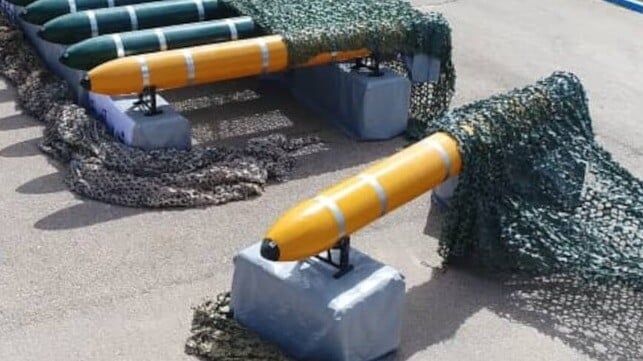Houthi Militants Deploy a Drone Sub for the First Time

Since the Houthi rebel faction began attacking Red Sea shipping last fall, U.S. forces have encountered and engaged a wide variety of anti-ship weaponry in and around Yemen. Shoot-downs and on-the-ground destruction of cruise missiles, ballistic missiles, airborne drones and suicide drone boats have become a matter of routine. Over the weekend, U.S. forces identified and destroyed a new class of weaponry in Yemen: a drone submersible, known in the trade as an unmanned underwater vehicle (UUV).
The new sighting occurred during routine self-defense strikes over the weekend. Overnight Friday, U.S. forces hit an anti-ship cruise missile and one suicide drone boat within Yemen. On Saturday afternoon, Central Command hit three more anti-ship cruise missiles, one more drone boat and - for the first time - one unmanned underwater vessel (UUV), or drone sub.
CENTCOM did not provide further details on the design or purpose of the drone sub, but described it as the first of its kind since the latest round of Houthi attacks began. The command described it as an "imminent threat" to U.S. warships and international shipping.
Iran, the Houthi group's main source of advanced weaponry, has unveiled several kinds of drone subs in the past several years. The most useful model for the Houthis' purposes would be the Islamic Revolutionary Guard Corps' drone torpedo weapon. This unnamed munition appears to have the functions of a torpedo, but with lower speeds and longer range, according to analyst H.I. Sutton.
The IRGC has also recently unveiled what appears to be a prototype of a much larger UUV, though its design and purpose are unknown.
Houthis target another tanker
On Friday, Yemen's Houthi rebels attacked a crude oil tanker in the Red Sea, causing no damage. It was the latest in a long string of strikes on Western shipping interests in the region.
From Friday afternoon through about 0100 hours Saturday morning, Houthi militants launched four anti-ship ballistic missiles into the Red Sea, according to U.S. Central Command. Three were aimed at the tanker Pollux, a Panama-flagged, Greek-operated tanker. No injuries or damage to the ship were reported.
In a statement, Houthi spokesman Yahya Saree said that the group had targeted a "British oil ship (Pollux) in the Red Sea."
Despite Saree's claims, the Pollux does not have any obvious links to Britain, and U.S. Central Command described it as a Danish-owned vessel. Denmark recently dispatched a frigate to join the U.S.-led maritime security mission in the Red Sea.
U.S. officials are concerned that the regular drumbeat of Houthi attacks, air defense intercepts and on-the-ground counterstrikes has become normal for the American public - and that the true risks have been masked by American capabilities.
"People have gotten too used to us being really good at shooting these incoming missiles down," an official told Fox News. "They don’t realize how hard it is to do and the strain on the sailors manning the radar. The risk in the Red Sea right now has been normalized and routinized . . . [it is a] very dangerous situation."
In multiple interviews with American media outlets, destroyer officers have emphasized that for some Houthi missiles, the amount of time the crew has to detect the inbound threat and mount a defensive response is measured in seconds.
